Incheon Chinatown: A Guide To The Area
Last Updated on April 14, 2025
People flock to Incheon’s China Town (인천 차이나타운) looking for authentic Chinese food and the quintessential red lanterns hanging from windows. Once leased territory to Qing China in 1884, the area is now known as the birthplace of the Korean-Chinese delicacy ‘jjajangmyeon‘. That should tell you something about what you’ll find out there. While there is authentic Korean-Chinese food, I’d say it’s pretty difficult to find authentic Chinese food.
While that’s something to be aware of, it’s still a fun area to visit to eat it up and walk around while learning about the port city that is still home to the descendants of those first Chinese settlers in the area. Colorful gates welcome visitors to the small but bustling neighborhood in Incheon. The streets and alleys are filled door to door with eats and treats. All of it together makes for a great day trip out of Seoul.
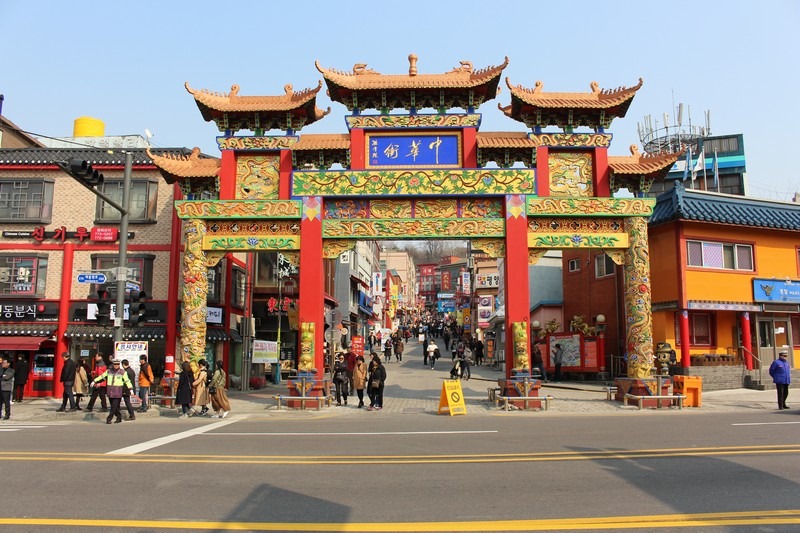
Here is all you need to know about Incheon’s Chinatown from what to see, what to do, what to see and what to eat.
- How To Get To Incheon Chinatown
- A Brief History Of Incheon’s Chinatown
- Where To Stay
- What To See
- Where To Eat
(This post contains affiliate links, which means I receive a certain percentage of a sale if you purchase after clicking. Thank you for your support.)
How To Get To Incheon Chinatown
Address: 269 Jemullyang-ro, Jung-gu, Incheon (인천광역시 중구 제물량로 269 (북성동1가))
By Subway: The subway in Seoul goes all the way out to Incheon Chinatown. Hop on and get off at Incheon Subway Station. Exit 1, 2, and 3 drop off right in front of the area. You’ll see the Chinatown gate as soon as you exit.
The neighborhood is easily navigable and super easy to find as it’s straight out of the only exit from Incheon subway station, the last station on the dark blue line. Don’t be afraid to get off the main streets and walk down the alleys. There are little game shops and eateries everywhere as well as parks and colorful buildings.
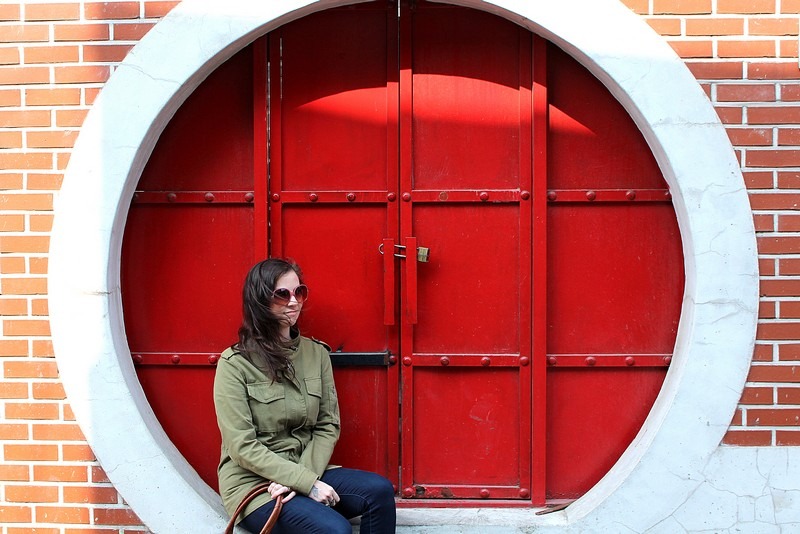
A Brief History Of Incheon’s Chinatown
This district was established in 1883 around the same time as the Incheon Port opening when Chinese immigrants traversed the ocean for work. Incheon was designated as an extraterritoriality of the Ching Dynasty and soon after the ‘Incheon Chinese Society’ was established. By 1900 there were more than 1000 Chinese residents living there.
Today, there are more than 50,000 overseas Chinese residents as well as second and third generations of the early Chinese settlers. The area fell into a state of decay for some time though and had a pretty high poverty level until the government saw an opportunity to build up the only official “Chinatown” in the country. Today, it’s a bustling area and one of the most popular tourist spots in Incheon. Incheon’s Chinatown makes every top ten list of what to do in Incheon and for good reason, it’s fun.
Where To Stay
There’s a lot to do in the area. After checking out the Incheon Chinatown, walk up the road, literally the next neighborhood, to see the Fairytale Village. You’ll definitely recognize some of the characters in the murals and installations. From there, don’t miss out on Incheon Art Platform which is also in the same block and easily accessible by foot. You COULD TRY to do them all in one day, but why not stay for a night and have a great spot for a weekend away.
Best Western Harbor Park Hotel: This is the closest hotel to Chinatown and the other awesome neighborhoods in the area and offers great views of the nearby port. The staff is friendly and helpful and it the hotel offers easy access to the nearby subway station and has all of the amenities one could need for a stay. Great spot for a little trip from the city but easily accessible. Book Your Stay Here.
What To See
When you enter Chinatown from the subway station direction, you’ll first see the beautiful gold and red Paifang, or a traditional style Chinese gateway. There are four Paifangs in Chinatown called Junghwamun, Seolinmun, Inhwamun, and Hanjungmun. You’ll be able to see them all as you wander the streets and loop in and out and around.
Paeru
Chinatown’s huge entry gate is easily found just across from the subway station (the first picture in this post) and welcomes all visitors. In the late 19th century, Chinese residents uses to stand at the gate and offer prayers and locals believed the gate kept ghosts at bay. Today, it is an historical relic of times past that every visitor must walk beneath to enter the bustling streets of the area.
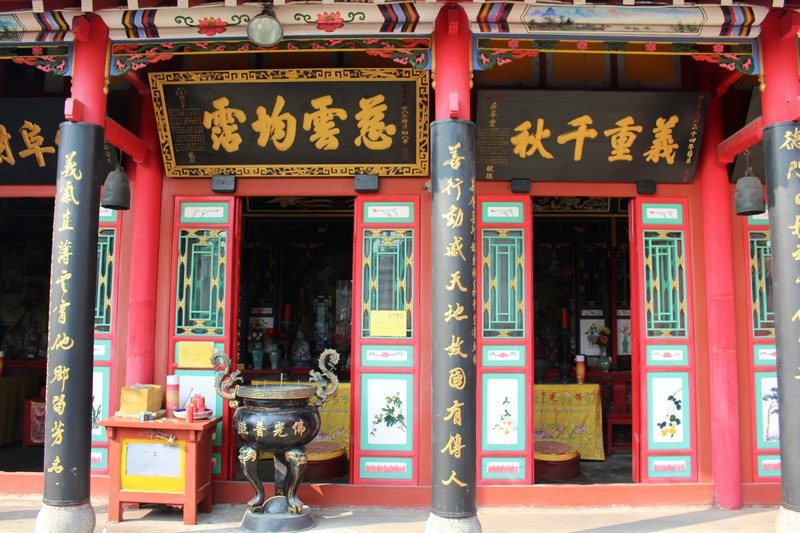

Wiseondang (의선당)
The only Chinese style temple/shrine left in Korea is Wiseondang. It was built in 1893 and has a colorful mural on the yellow exterior walls. Inside the temple, remember to be respectful and not to take photos of the inner shrine area. There are signs posted saying as much, except that they’re only in Korean.
Take in the quiet surroundings and look at the dragons and architecture that is quite different from the Korean temples you’ll see in the rest of the country. Most people pass this by as they’re headed to find a restaurant, don’t let that stop you though. Step through the entrance and take it in even for just a quiet moment.
- Address: 9-16 Buksung-dong 2-ga Jung-gu, Incheon (인천광역시 중구 북성동2가 9-16)
Samgukji Mural Street (삼국지 벽화거리)
This 150 meter long street features murals that depict the story of the Three Kingdoms. Portraying the heroes of the time, it’s a look at the Chinese fables you often hear about. There are murals and street art all over, but this is one of the most popular strips to see in the area. Head here for some great photo-ops or just something beautiful to see. Take it all in and see if you can decipher the various tales being told. If you like murals, don’t miss a stop at Ihwa Mural Village in Seoul and Gamcheon Culture Village in Busan, Korea too.
- Address: Seollin-dong, Jung-gu, Incheon (인천광역시 중구 선린동)



Jayu Park (Freedom Park) (자유공원 (인천))
Set above the Chinatown streets on Mt. Eungbonsan, this small park is easy to find as a decorated staircase from the Chinatown streets head straight up. The park provides a nice respite from the very busy streets of the area, but it also has a statue of General Mac Arthur who led the Incheon Amphibious Landing Operation during the Korean War.
If you want a break in some nature, or to work off some of the food you ate, so you can head back down and eat some more, then head up and enjoy the views… or the exercise equipment. Head to the area in early spring, and you’ll find the park awash with gorgeous cherry blossom trees too.
- Address: 25 Jayugongwonnam-ro, Jung-gu, Incheon (인천광역시 중구 자유공원남로 25 (송학동1가))
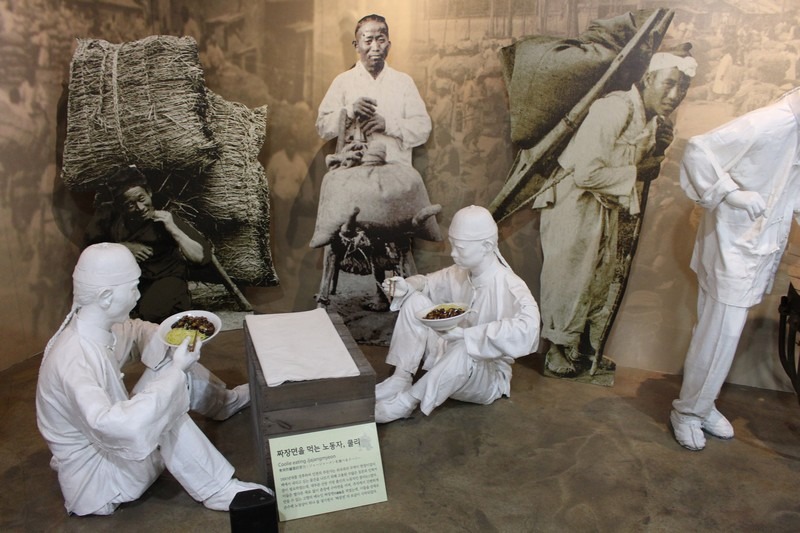
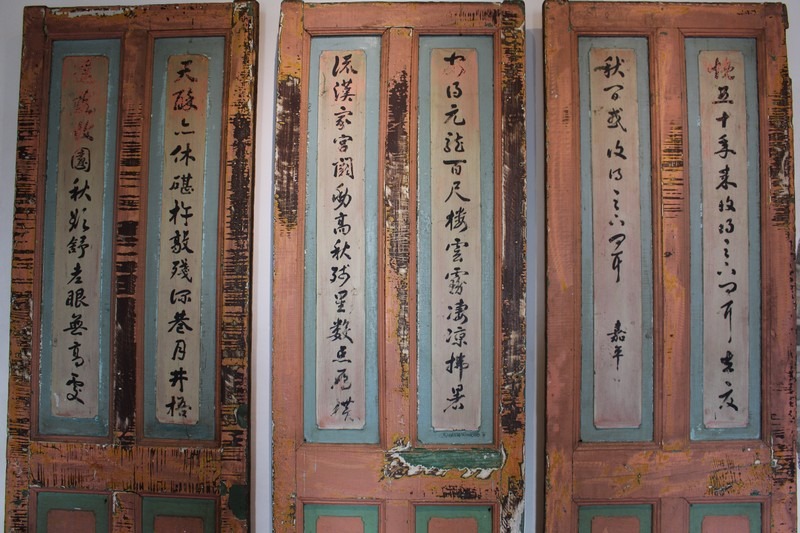
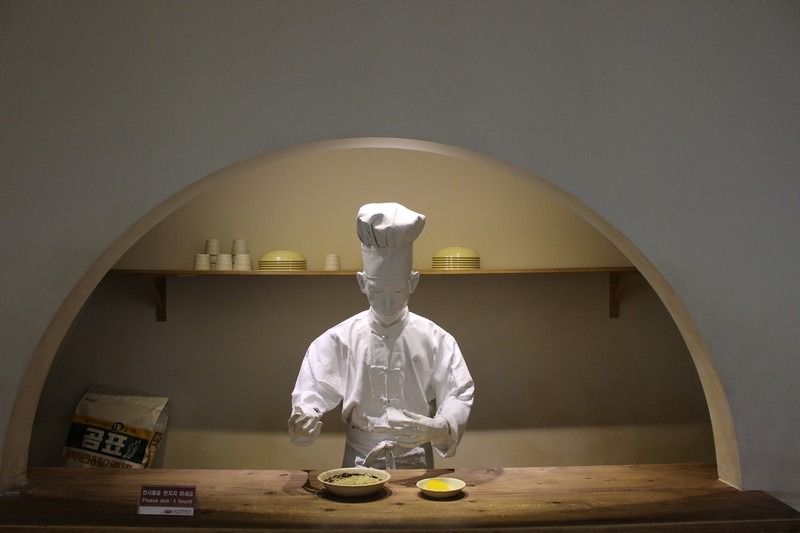
Jjajangmyeon Museum (짜장면박물관)
To learn about the dish made famous from this area and served about 7 million times daily in Korea, this is the place to go. Located in the old Gonghwachun, the restaurant where the dish originated, it’s an apt location to tell the tale of how the Chinese laborers in the area were seeking food from home so a restaurant came up with the noodle dish with the dark soy paste sauce. There isn’t terribly much information in English, but the dioramas and installations provide a bounty of info on how to make the dish.
I found the historical packaging particularly interesting. It’s a cheap stop that takes less than a half hour to peruse and provides some good back info on the area. If you know anything about Korean holidays and you know what jjajangmyeon is, then you’ll know that this area is hopping on April 14th, also called Black Day, when everyone digs into a big bowl of this popular Korean-Chinese noodle dish. Interested in taking part in the holiday? Head out to Incheon’s China Town, learn about the dish and then dish it up!
- Address: 56-14 China town-ro, Jung-gu, Incheon (인천광역시 중구 차이나타운로 56-14 (선린동))
- Days: CLOSED Mondays
- Hours: 9:00am ~ 6:00pm
- Admission: W1,000
Where To Eat
Gong Hwa Chun (공화춘)
Probably the most famous restaurant in the area, this four-story restaurant stands out along the street with its grand exterior. The original jjajangmyeon maker, the restaurant has been in the area since the early 1900s and is still serving up bowls of the delicacy they’re known for. This is the “new” Gonghwachun location, though the older building is still in the area and is now housing the jjajangmyeon museum.
Try to eat here if you really want that authentic meal while in Korea’s only Chinatown. This is where the locals say jjajangmyeon was first produced and it’s been serving the dish since 1908!
- Address: 43 Chinatown-ro Jung-gu, Incheon (인천광역시 중구 차이나타운로 43 공화춘)
- Hours: Open every day 10:00am ~ 9:30pm
Daechang Banjeom (대창반점)
While the area is famous for jjajangmyeon, this restaurant sets itself apart by serving up white jjambbong. This small restaurant near Gonghwachun has been serving the dish since the 1980s and the chef is the grandson of the original chef who handed down the special recipe. Big noodles are mixed with seafood, pork and vegetables in a milky chicken broth that leaves a spicy aftertaste on the tongue.
- Address: 55-1 Chinatown-ro Jung-gu, Incheon (인천광역시 중구 차이나타운로 55-1)
- Hours: Open every day 11:00am ~ 9:00pm
Sim Ni Hyang (십리향)
Famous for oven-baked dumplings that are filled with minced meat, red beans, cheese, vegetables and sweet potatoes, this restaurant has a line out the door almost every day. The name of the restaurant translates to mean 10-ri (4 kilometers) and is meant to connote the idea that the sweet smell of the dumplings will spread 10-ri.
The dumplings taste a bit lighter and sweeter than their Korean cousins that are cooked in oil or steamed. Baked in 200 degree Chinese pottery, means the skin of the dumplings comes out crispy. This is the ONLY restaurant in the area that serves these, so the line is worth the not terribly long wait.
- Address: 50-2 Chinatown-ro Jung-gu, Incheon (인천광역시 중구 차이나타운로 50-2)
- Hours: Open every day 12:00pm ~ 8:00pm
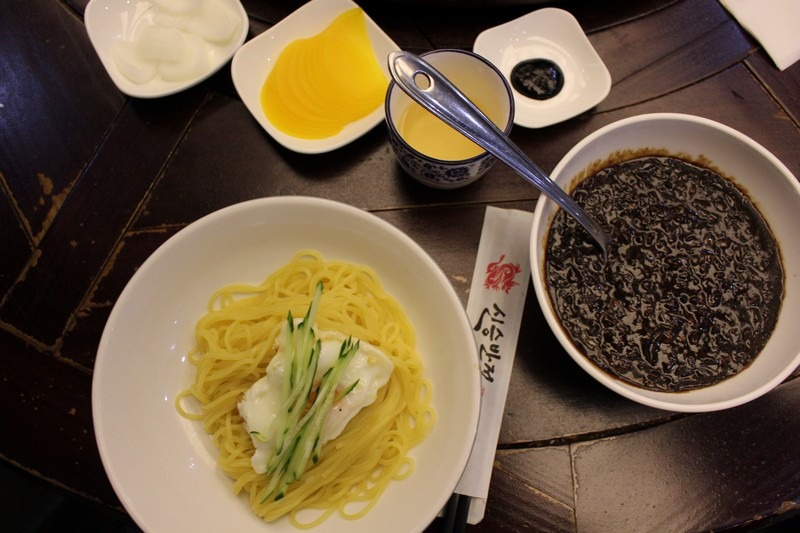
Shin Seung Ban Jeom (신승반점)
Recently featured on a Korean foodie show, this restaurant has gotten a bit of hype for their uni jjajang dish. There are multiple kinds of jjajangmyeon dishes which you can learn about at the Jjajangmyeon Museum and this is one of them. Uni jjajangmyeon is made by cutting the ingredients in to much smaller pieces so the water in the dish comes from the veggies rather than being added during the cooking process. It has a milder taste and this restaurant was great as it allowed us to just get a number and then continue walking around the area while checking back to see how the wait was progressing.
- Address: 31-3 Chinatown-ro 44-gil Jung-gu, Incheon (인천 중구 차이나타운로44번길 31-3)
- Hours: Open every day 11:00am ~ 9:00pm
Yeon Gyeong (연경)
One of the top three most famous restaurants in the area, there is sure to be a wait to get in here. The four story building is pretty grand and can’t be missed while walking along the streets of the area. While most people are diving into bowls of jjajangmyeon of course, another dish that is a big hit from Yeon Gyeon is their fried chicken served with a sweet and sour soy sauce. There is also a delectable Beijing duck course if you want to go all out.
- Address: 41 Chinatown-ro Jung-gu, Incheon (인천광역시 중구 차이나타운로 41 연경)
- Hours: Open every day 10:30am ~ 9:30pm
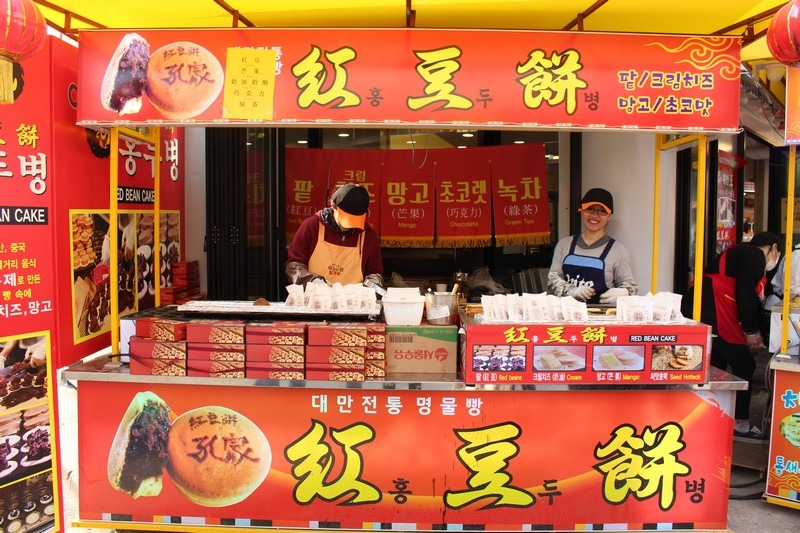
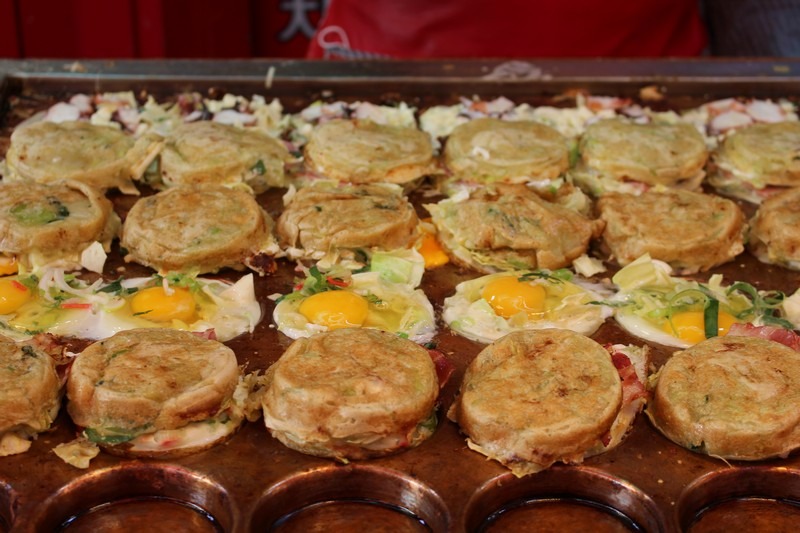


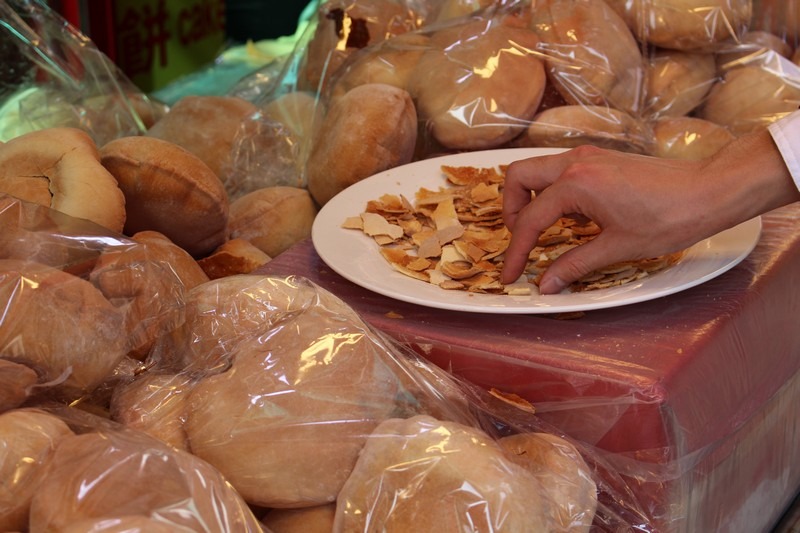
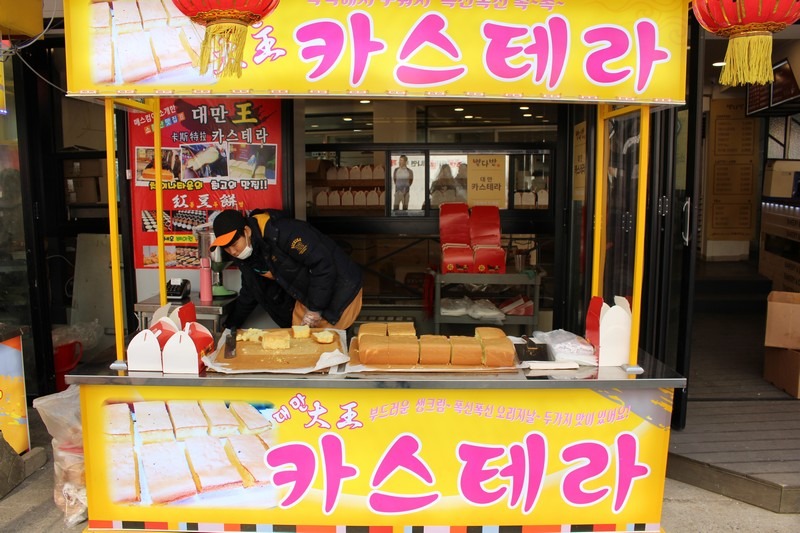
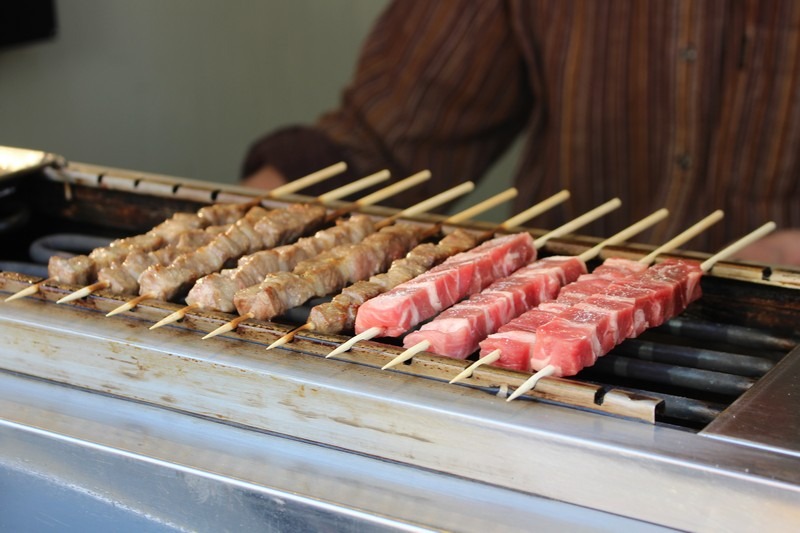
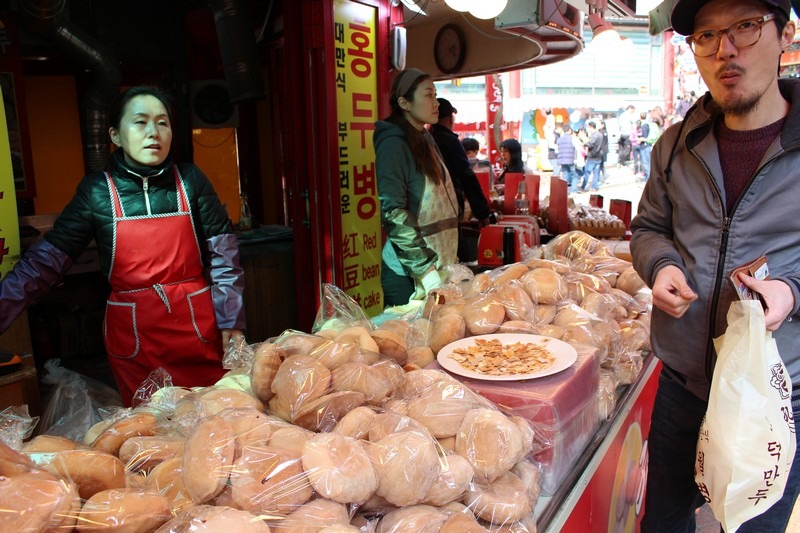
Street food
If waiting in lines is not your thing… because those restaurants above will definitely have lines, check out the street food because it is legit delicious! We, of course, ate the requisite jjajangmyeon but the lamb skewers, Chinese bread filled with red bean paste, cream cheese and mango creme, mooncakes, pineapple cakes and more are so so delicious.
I highly recommend just bouncing from street food stall to street food stall to enjoy a more substantial amount of eats while waiting far less. The jjajangmyeon restaurant we waited for left us with an hour long wait, though we were able to just get a number and keep walking around while other restaurants make you actually stay in the line the entire time. Which would you prefer?

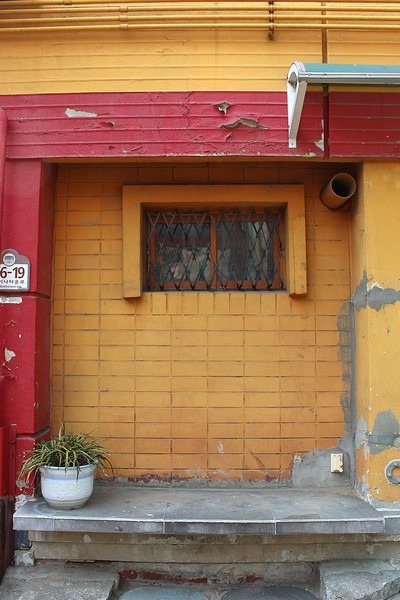

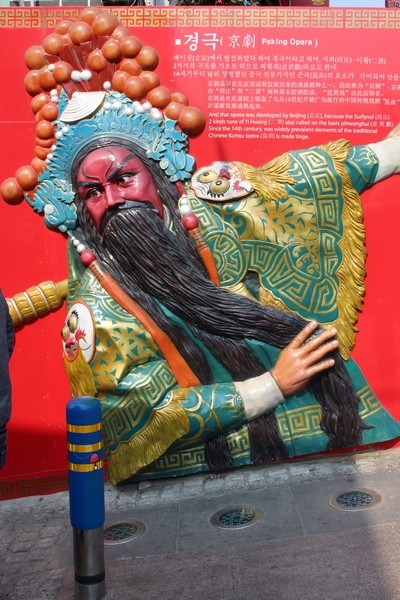
Did you like this post? Pin It!
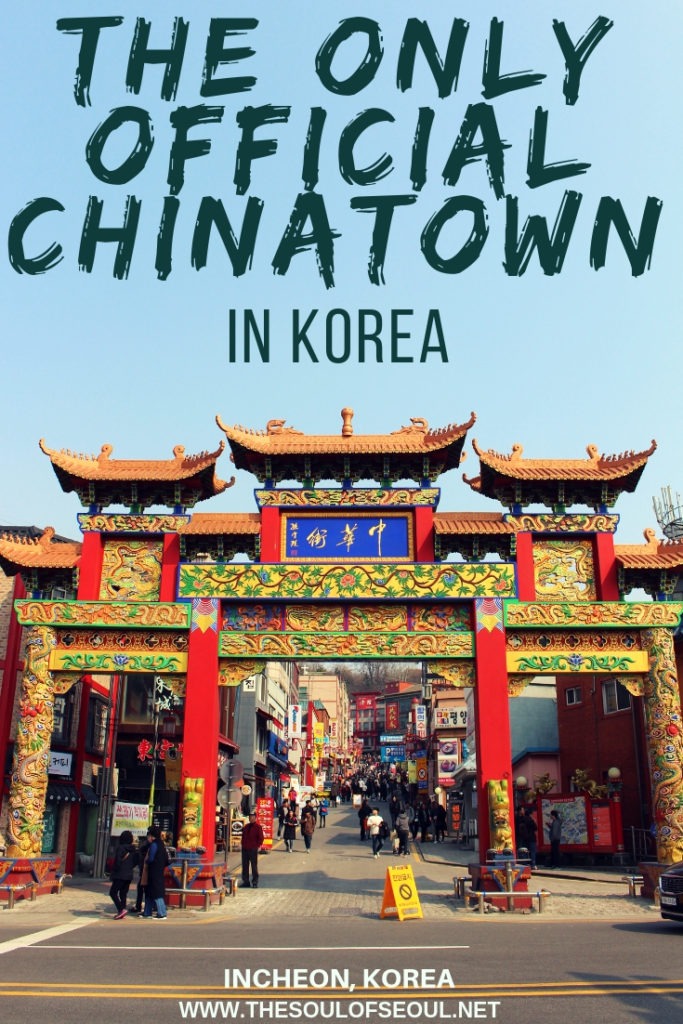
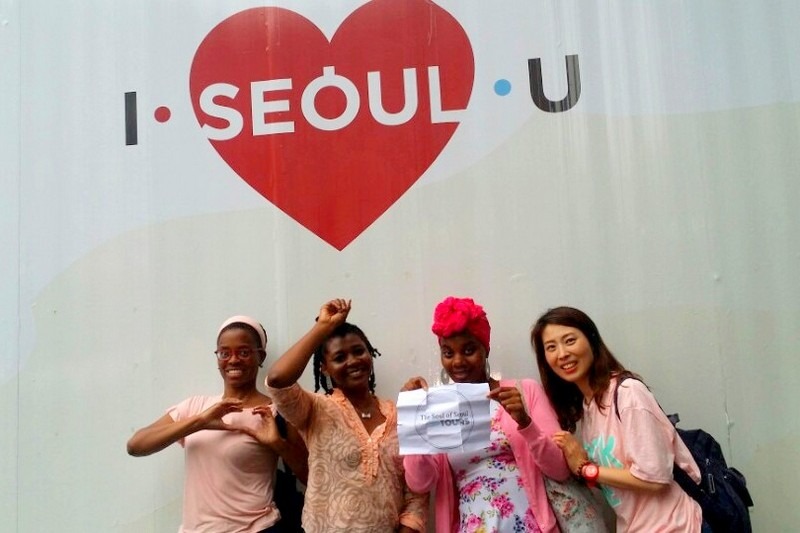

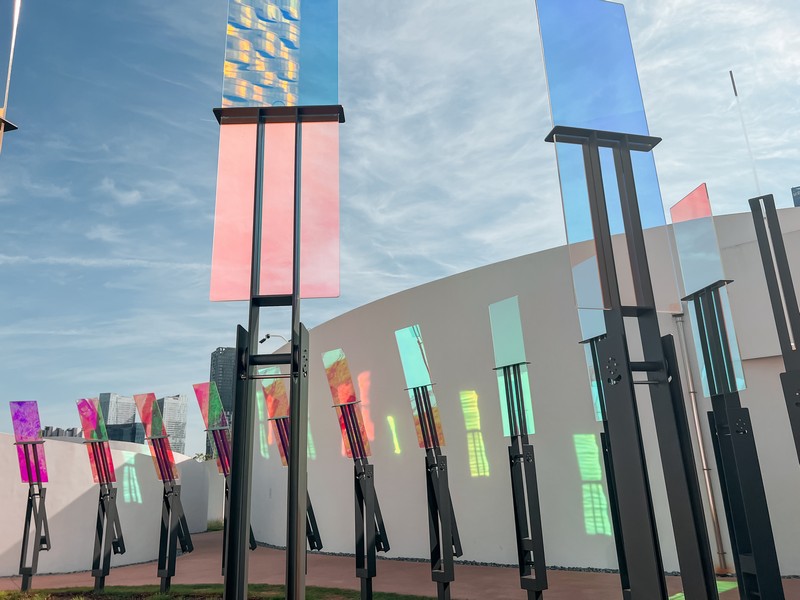
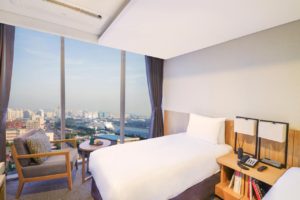
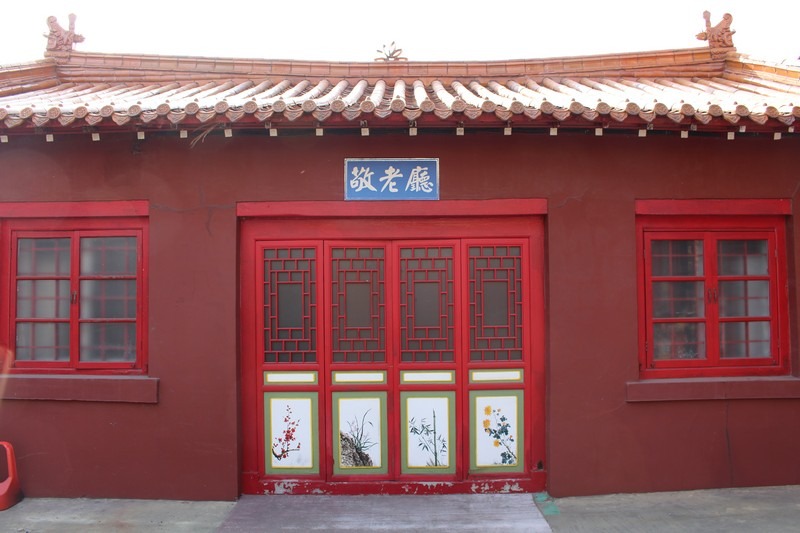
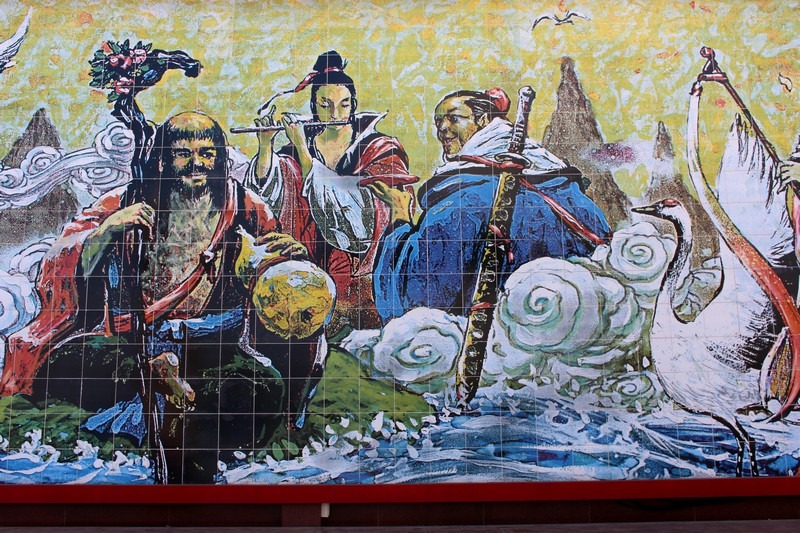
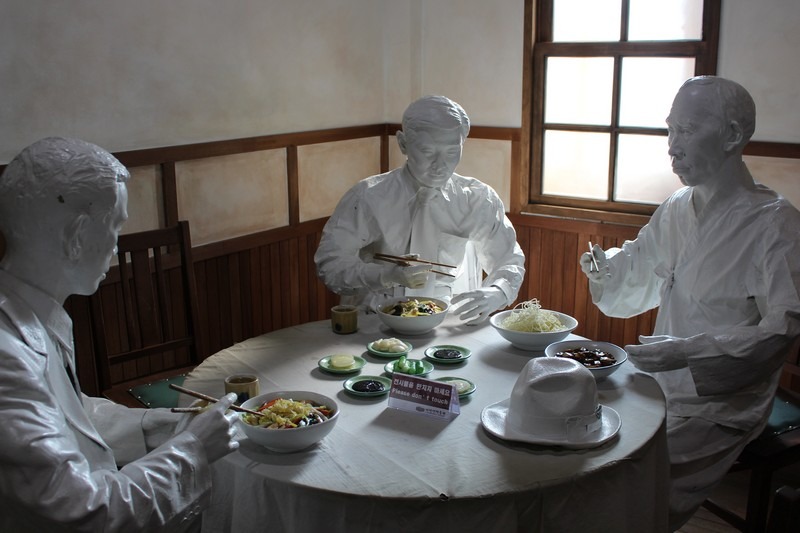
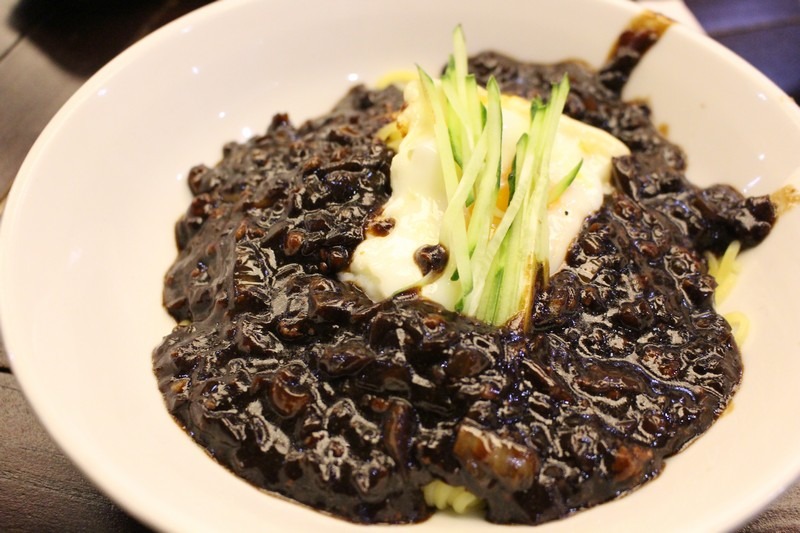
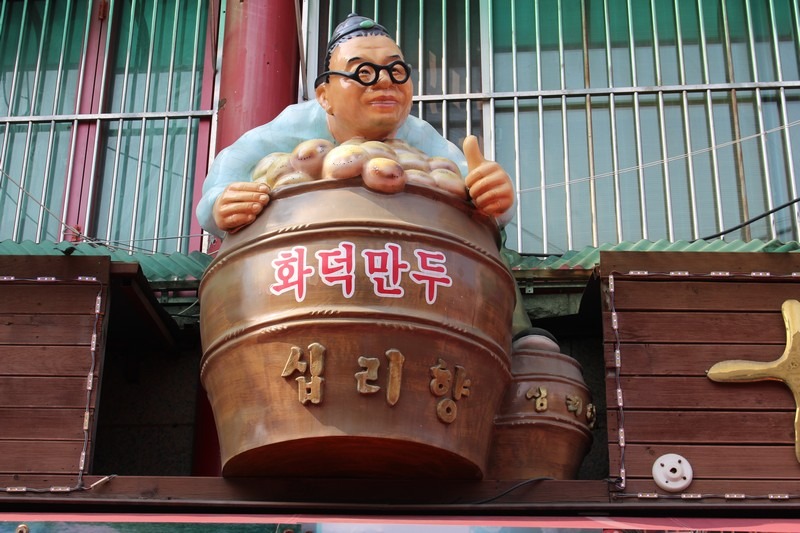
12 Comments
Emy de silva
hi! would you know if Chinatown stores close during Chuseok? we intend to go there on the 28th of this month. thanks!
Hallie Bradley
Chinatown itself is just a neighborhood so it would be open to walk around. I would imagine that most shops would be open on the 28th since Chuseok is on the 29th.
SG
I am staying near Unseo station. How do I get there?
How much is a cab ride from Unseo Station? TIA.
Very informative website! Kudos!
Shelley @Travel-Stained
A whole museum dedicated to jjajangmyun…wow, Koreans really do love that dish. I’ve developed a small addiction to that dish from living here, but in Canada, I really hated it. Something about the colour and consistency was strange for me I guess. And pretty sure I wouldn’t wait in line an hour to eat it in Incheon, but the oven baked dumplings from Sim Ni Hyang sound really, really delicious. No wonder there’s always a line-up there…
Hallie
It took me awhile to get into it too. Now I dig in from time to time.
Nisha
I have made plans for South Korea 2 times in the pas and not been able to go. The Chinatown looks quite beautiful. I am sure I am going to include it in my itinerary
Cat
China towns in North America tend to be dirty and sketchy. But in Incheon, it looks so clean and organized. So many delicious eats to try there! Looks like a great place for foodies!
abcdefghizzy
Chinese fables really intrigue me so of course my eye was drawn to Samgukji Mural Street! And jjajangmyun is my newfound favorite Korean dish! How did I not gorge on this more when I was in country?? Love this post and thanks for highlighting another Chinatown community! It’s fascinating!
thetravelpockets
I love cooking and am alway fascinated by food culture, so the Jjajangmyeon Museum sounds like my kinda place to explore. I would probably try to bring a translator with me since there isn’t much information in English 🙂
siniciliya
Korea has always been on my travel Bucket list so I am trying to collect as much information as possible. Chinatowns are always an authentic experience and I have saved this information in my “Korea travel” folder.
I really appreciate that you shared good places to eat.
Sarah Kim
Omg I would die at the jjajjangmyung museum. I love that dish. I grew up eating it in Queens, NY but it’s not really a common Korean-Chinese dish other than Korea/NYC/LA. I really don’t find it anywhere. That’s awesome you know how to make it!
Megan Indoe
Chinatown was the only area in Incheon we really liked! I love the small area and how different it feels than the rest of Korea. Unfortunately we picked a bad restaurant and had one of the worst meals in my life, but everything else looked great! Haha, just bad luck sometimes! Seeing your photos and suggestions it makes me want to go back and eat better food! haha